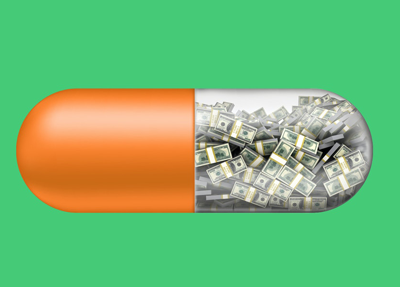 To understand why medical schools teach what they do today, you have to review the history of medical schools, medical practices, and laws and regulations governing the provision of medical services.
To understand why medical schools teach what they do today, you have to review the history of medical schools, medical practices, and laws and regulations governing the provision of medical services.
Prior to 1910 medicine in America was a broad mixture of treatment protocols, including traditional, homeopathy, naturopathy, botanical and herbal medicine, chiropractic, and other alternative approaches, as well as some that may rightly have been labeled quackery. During this time philanthropists such as Carnegie and the Rockefellers were known for their successful ventures in the steel and oil industries, but they were into other profitable areas including the pharmaceuticals industry. They realized of all the varied protocols used in the medical field, only patentable drugs could bring them profits. Simple, inexpensive, alternative protocols that demonstrated success against disease drew money away from pharmaceutical drugs, where the profits were. Thus, they reasoned that the way to alter treatment protocols was to have greater influence over what doctors were using in their practices. To accomplish this, they needed to alter, as well as control, what it was that medical schools were teaching aspiring young doctors.
In 1910, the book American College, written by Abraham Flexner, came to the attention of the head of the Carnegie Foundation. One of the stated goals of the Foundation was the improvement of health care in America. Flexner, a former teacher and traveler/researcher, was an expert on educational practices in America as well as Britain, France, and Germany. A Carnegie Foundation official offered to engage Flexner to survey medical school quality throughout the US and Canada and provide suggestions for their improvement. In taking the assignment, Flexner became the hatchet man, as viewed by some, who helped rid the medical system of substandard medical schools that produced poorly trained physicians. One of the earlier results of the Flexner report was the eventual elimination of about one-third of the medical schools in existence at the time that could not pass muster. Another significant outcome of the study was the enactment of licensing laws for medical schools, which put the for-profit proprietary schools out of business.
The influence, which came with the large sums of money granted to medical schools by Carnegie, Morgan, and the Rockefeller’s, was significant on its impact in the direction university medical schools instruction went. Again, some history helps put this influence in perspective. The John D. Rockefeller family built its fortunes in the 1860s through oil investments and the creation of Standard Oil Company. In 1911, the US Supreme Court ruled Standard Oil in violation of anti-trust laws and ordered it dissolved. By this time, the Rockefeller family already owned a chemically based pharmaceutical monopoly, which they were intent on preserving. So, as monies came in to the university medical schools, representatives of these three major contributors—Carnegie, Morgan and Rockefeller—were granted seats on the University Boards where they wielded significant control of the medical school instruction.
So how did this control affect the instructional programs in the medical schools? Slowly, with the subtle influence of the philanthropic representatives on the Medical Boards, there was movement to promote the idea of pharmaceuticals as the treatment of choice, relegating alternatives such as nutrition therapy and other modalities to the dustbin of history. Thus, what drives medical school instruction today has its genesis in the early twentieth century and still holds sway today, except that now it is more deeply entrenched in the medical school ethos.
The monetary influence of those major philanthropic benefactors helped dictate the medical school curriculum and treatment options of the early 20th century. Today drug companies continue to promote pharmaceuticals as the treatment of choice for both aspiring and practicing physicians. The influence of pharmaceutical reps in promoting their wares to physicians for treatment of all kinds of medical issues is enormous and controlling.

Recent Comments